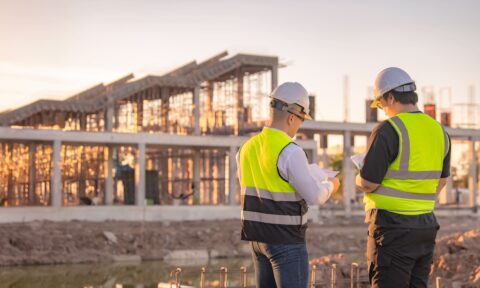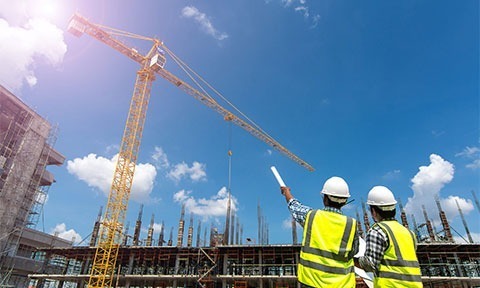OpenFAST for the design of offshore wind turbines
- Course focuses on training engineers in offshore wind turbine design using OpenFAST tool.
- Delivered by Dr. Yang Yang, a professional user of OpenFAST developed by NREL, USA.
- Covers modeling of wind turbines, including rotor-nacelle assembly and environmental conditions.
- Designed for engineers and scientists involved in offshore floating wind turbine structures.
- Innovative course with a balance of theory and practice for a comprehensive learning experience.
Overview
The OpenFAST Offshore Wind Turbine Training course aims to provide engineers and scientists with the skills to design and analyze offshore wind turbines using the OpenFAST tool. Led by Dr. Yang Yang, the course covers topics such as modeling wind turbines, environmental conditions, and case studies on monopile and floating wind turbines. The training program is suitable for professionals involved in offshore wind turbine structures and offers a balance of theory and practice.
Who should attend
Engineers, Scientists, Personnel from Oil Companies, Class Societies, Offshore Structures Builders
Course Content
About The Course
The design of wind turbines requires engineers to run thousands of fully coupled aero-hydro- servo-elastic simulations, including power production, start-up, shutdown and other fault-type design load cases. OpenFAST is a well-validated and widely-used open source tool for coupled simulations of wind turbines. However, it is difficult to use OpenFAST for the new users due to the absence of the graphical user interface.
This course aims to deliver a training program for the design of offshore wind turbine including floating type and fixed-bottom foundation. The 8 lectures will be delivered by Dr Yang Yang who is a very professional user of OpenFAST, which is developed by NREL, USA. This course will introduce how to download, compile, and run the OpenFAST program. The monopile type and semi-submersible floating NREL 5MW wind turbines are used for the case study. The training contents of the 8 lectures are given as follows:
Who Should Attend?
Engineers & scientists involved in the design and analysis of offshore floating wind turbine structures including foundations. Personnel from oil companies, class societies and offshore structures builders will benefit from attending this course. The course is innovative in both content & structure with careful balance of theory & practice.
Day 1 – (All timings in BST (GMT +1)
9.00-10.30 Lecture 1: Basic introduction to OpenFAST
Brief description of numerical simulation tools and the basic functionality of OpenFAST.
How to download executable program, source code, examples
Introduction to the archives
How to run OpenFAST
10.30-10.45 Break
10.45- 12.15 Lecture 2: Modeling of an offshore wind turbine Part 1: Rotor-Nacelle assembly and
tower
Breakdown of the wind turbine system
Introduction to the coordinate system and output channel
Aerodynamic modeling of the blade and tower
Structural modeling of the blade and tower
Modeling of rigid bodies
12.15-12.45 Lunch
12.45- 14.15 Lecture 3: Modeling of an offshore wind turbine Part 2: Substructure/ support system
Modeling of the monopile (including SSI effect)
Modeling of the Semi-submersible floating platform
Modeling of mooring system
14.15-14.30- Break
14.30-16.00 Lecture 4: Modeling of an offshore wind turbine Part 3: Environmental conditions
Modeling of wind
Modeling of wave and current
Modeling of hydrodynamics of Morison elements (Monopile wind turbine)
Day 2
09.00-10.30 Lecture 5: Modeling of an offshore wind turbine Part 4: Hydrodynamics of the floating
wind turbine
HydroDyn requirement for potential theory solutions
WAMIT outcome format
Viscosity correction (added damping or Morison equation)
10.30-10.45 Break
10.45- 12.15 Lecture 6: Case study Part 1: Dynamics of the monopile wind turbine (DLC1.1)
Definition of the torque-pitch controller
Steady-state performance
Turbulent wind modeling
Normal power production
12.15-12.45 Lunch
12.45-14.15 Lecture 7: Case study Part 2: Dynamics of the monopile wind turbine (DLC2.1, 3.1, 4.1,
5.1, 6.1, 7.1)
Normal power production with a pitch failure DLC2.1
Start-up scenario DLC3.1
Normal shutdown scenario DLC4.1
Emergency shutdown scenario DLC5.1
Parked and idling condition DLC6.1
Parked plus fault conditions (yaw misalignment, brake system failure)
14.15-14.30 Break
14.30-16.00 Lecture 8: Case study Part 3: Dynamics of the floating platform
Free-decay simulations
Mooring system effect
Second-order hydrodynamics
LECTURER CV
Dr Yang Yang
This course will be delivered by Dr. Yang Yang. Dr. Yang was a postdoctoral research associate in Liverpool John Moores University during Oct. 2018 to Dec. 2020. His now an associate professor based in Ningbo University since May 2021. He has published more than 60 papers and 11 papers in refereed SCI journals as the first author. Dr Yang has been granted for more than 10 projects from the Nature Science Foundation of China, Nature Science Foundation of Zhejiang Province, and other industrial corporations. He is devoted to the development of a fully coupled modeling methodology, structural control measure, and structural healthy monitoring algorithm for offshore energy systems.
Dr. Yang is a very professional user and has developed a seismic coupled analysis and structural control architecture for fixed bottom offshore wind turbines based on FAST. In addition, he has developed a fully coupled framework (F2A) for floating offshore wind turbines based on AQWA and OpenFAST, and F2A is released to the public for free to use. In terms of the coupled modeling of an integrated floating wind-wave-current energy system, he has developed a numerical tool by implementing PTO modeling capability within F2A.
Duration: 2 Days
Cost: £695 + Vat



